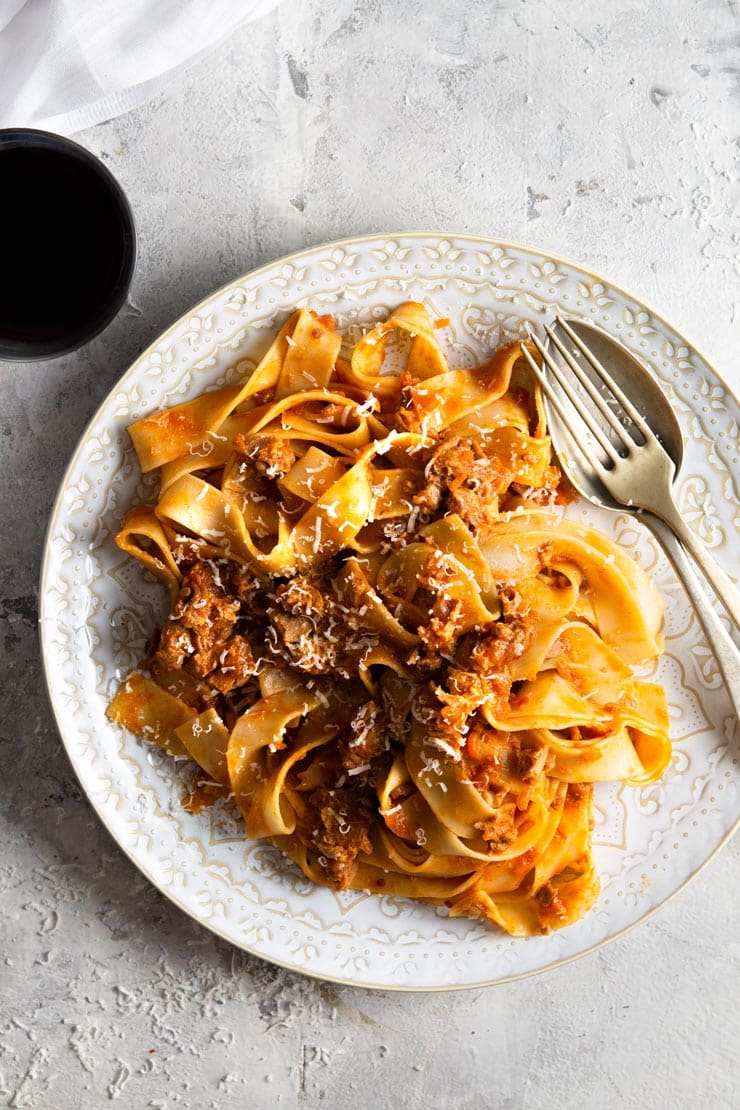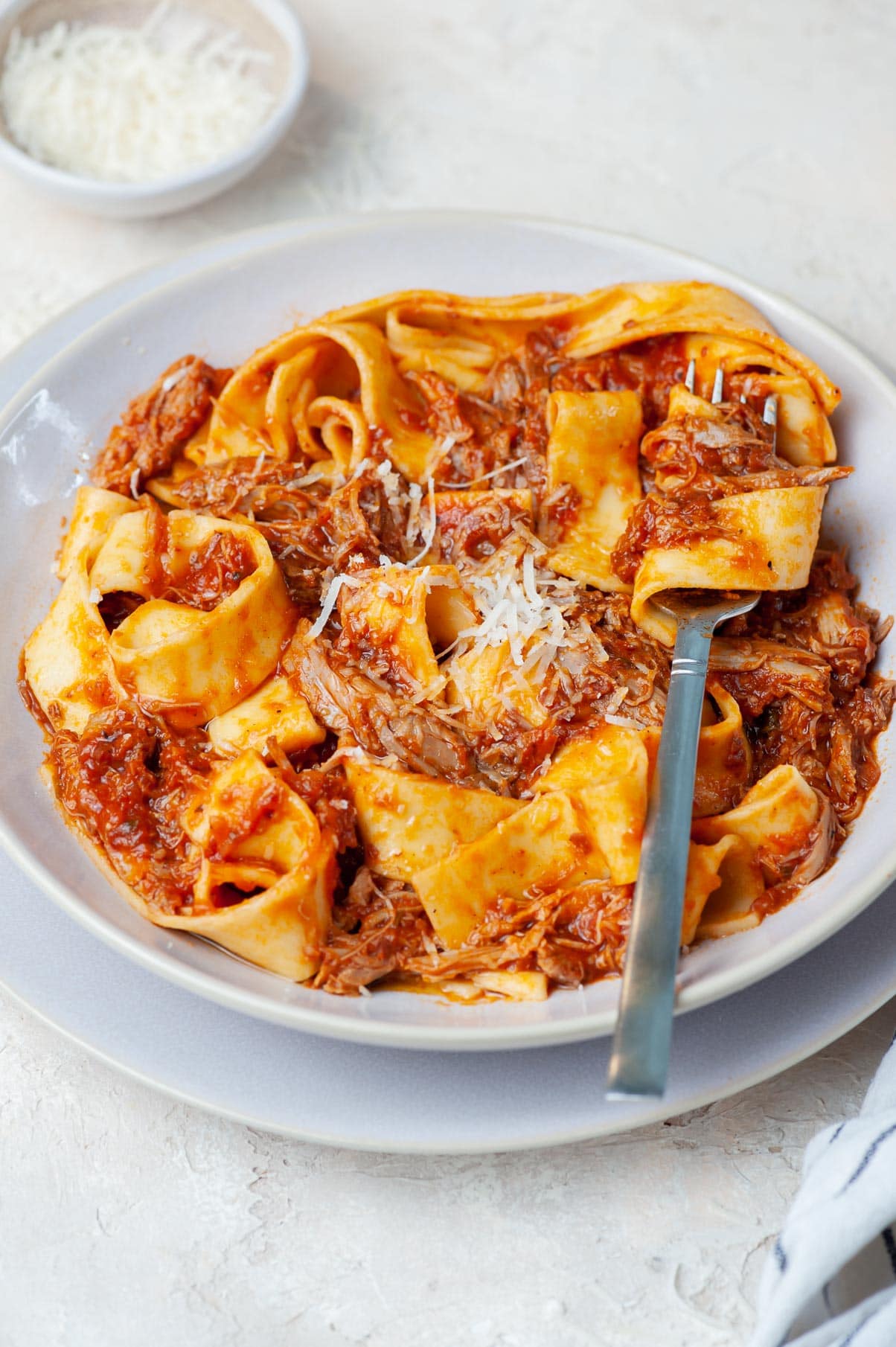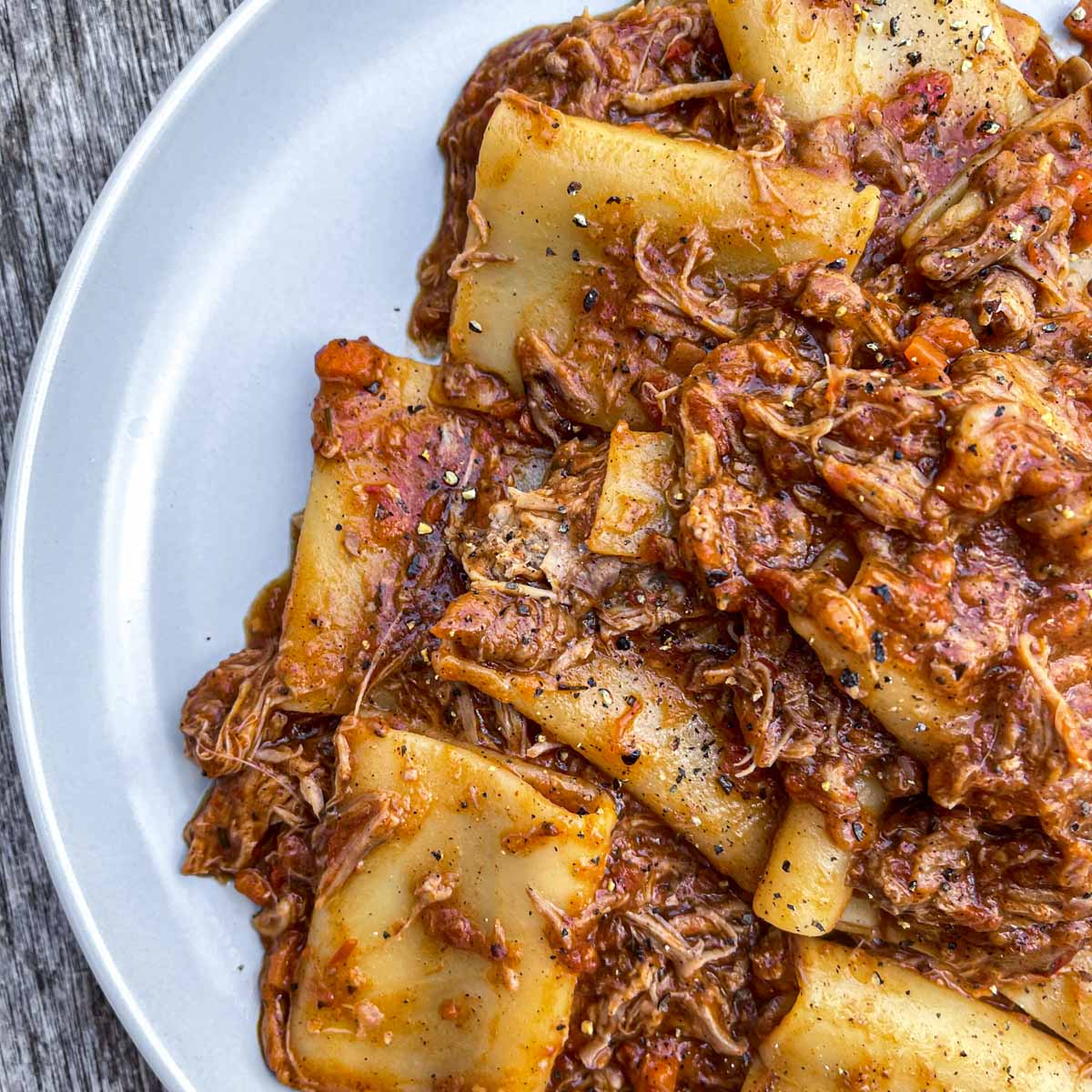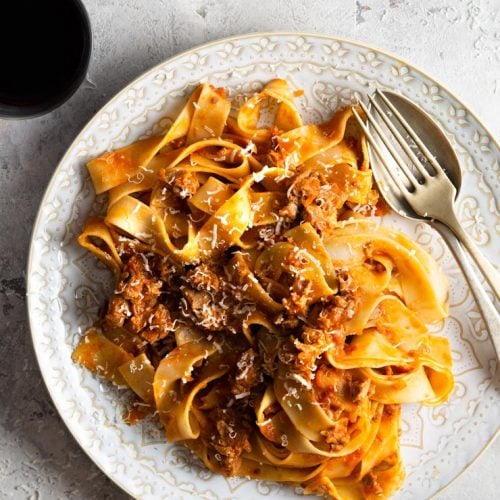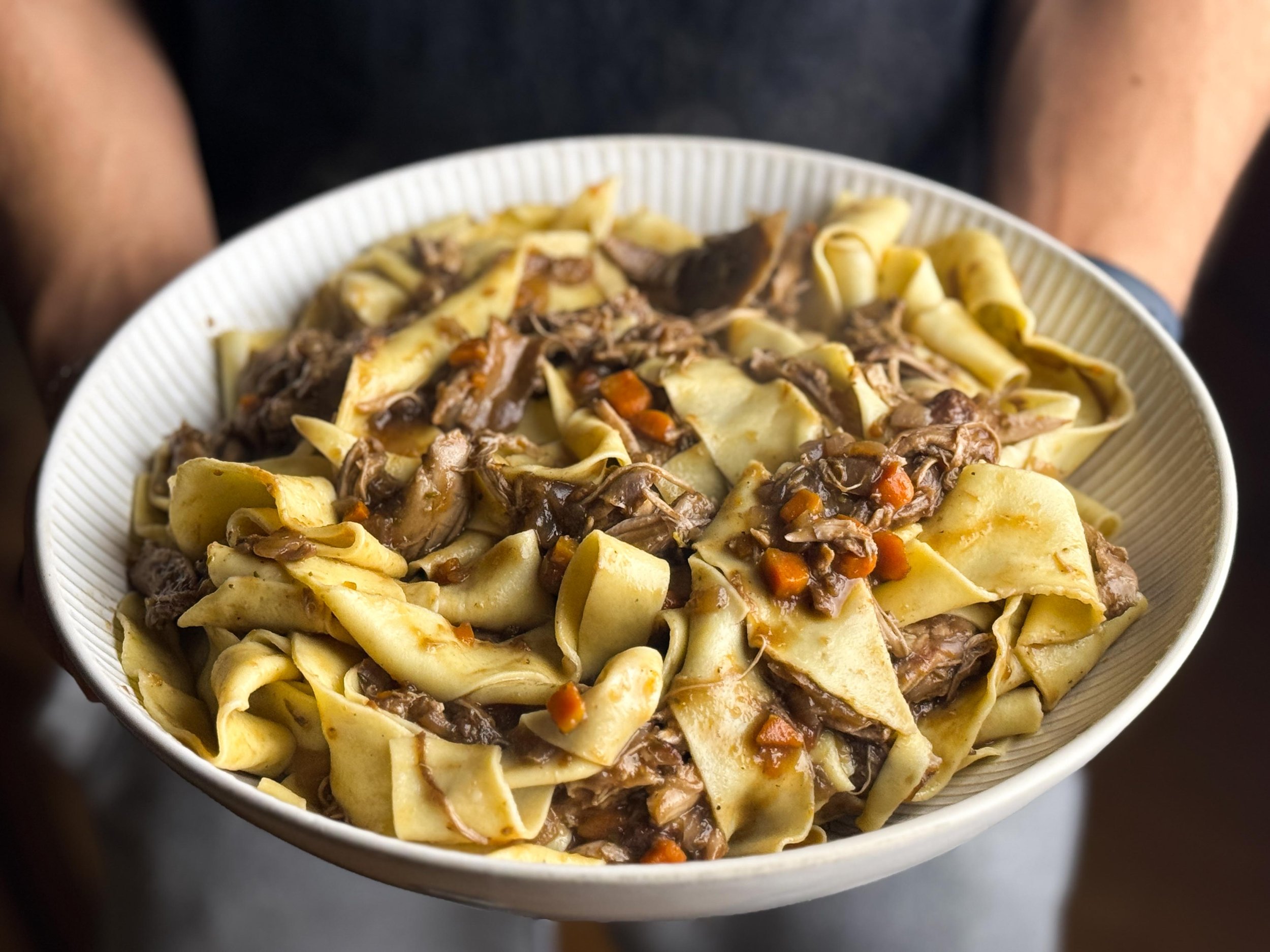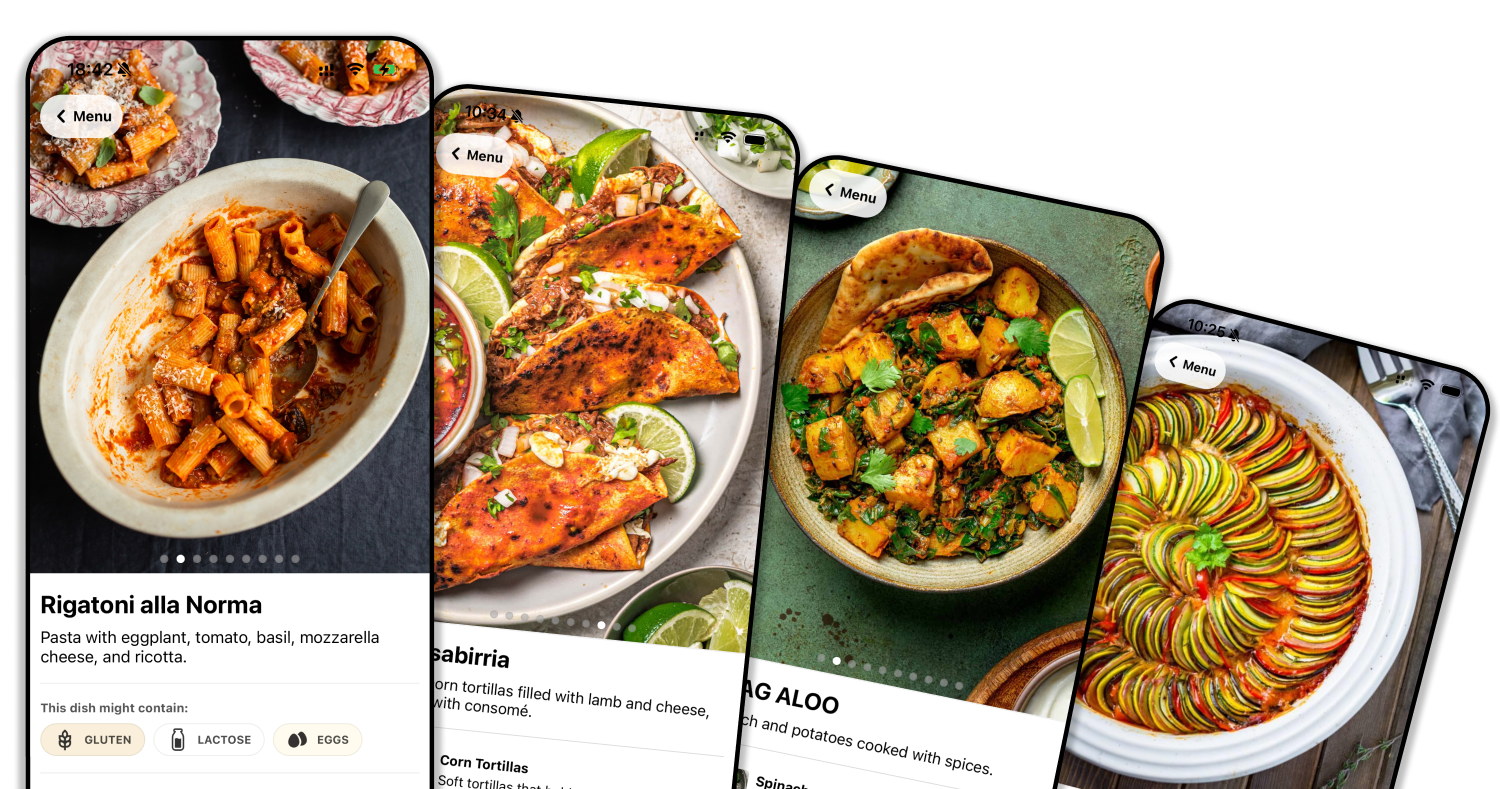What is
Tagliatelle, Duck Ragu?
A traditional Italian dish featuring flat, ribbon-like pasta known as tagliatelle, served with a rich and savory ragu made primarily from duck meat. The ragu is typically slow-cooked to enhance the flavors and create a comforting and hearty sauce that clings to the pasta.
Origins & History
Tagliatelle is a type of pasta that originates from the Emilia-Romagna and Marche regions of Italy. Duck ragu is a variation of traditional meat sauces, commonly found in Northern Italian cuisine. The combination of tagliatelle and duck ragu showcases the rich culinary traditions of Italy, particularly in regions known for their use of game meats and handmade pasta.
Taste & Texture
The dish offers a harmonious blend of savory, rich flavors from the duck and aromatic herbs, combined with the nutty and chewy texture of the tagliatelle. It is often enhanced with the depth of red wine and the sweetness of tomatoes, creating a complex taste experience that is both hearty and satisfying.
Ingredients
Tagliatelle
A type of pasta made from flour and eggs, characterized by its long, flat shape. It is often freshly made or can be found dried in stores.
Duck
A flavorful poultry often used for its rich meat. In the ragu, it is typically cooked down to create a tender and succulent sauce.
:max_bytes(150000):strip_icc()/Crispy-Air-Fryer-Onion-Rings-FT-MAG-RECIPE-1124-d1e118a6919a4b82bad9f916440249cb.jpg)
Onion
A common aromatic vegetable used in cooking to add sweetness and depth of flavor.

Carrot
A root vegetable that adds sweetness and a slightly earthy taste to the ragu.
Celery
A crisp vegetable that contributes fresh flavor and texture, commonly included in a mirepoix for sauces.

Tomato
Used in various forms (fresh, canned, or paste) to provide acidity and sweetness to balance the richness of the duck.
Red wine
Often added to the ragu to deepen the flavor and add acidity to the sauce.
Herbs (such as thyme and bay leaf)
A mix of fresh or dried herbs that infuse the ragu with aromatic flavors.
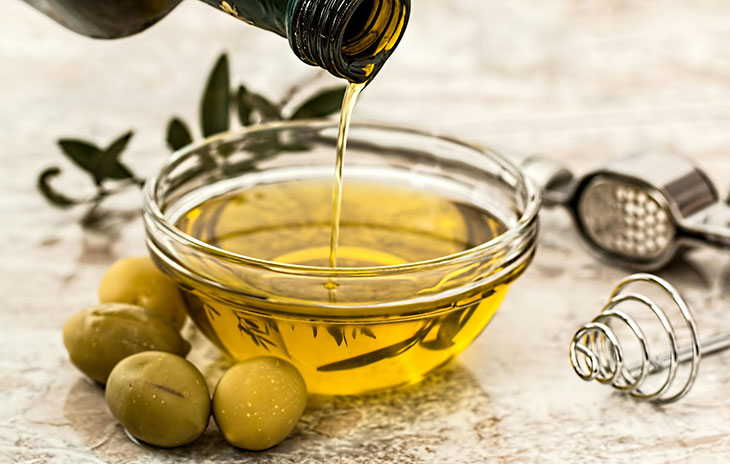
Olive oil
Used for sautéing the vegetables and adding healthy fats to the dish.
Salt and pepper
Essential seasonings used to enhance the flavors of the dish.
This item may contain the following allergens:
Gluten

Images may not reflect the actual item.

